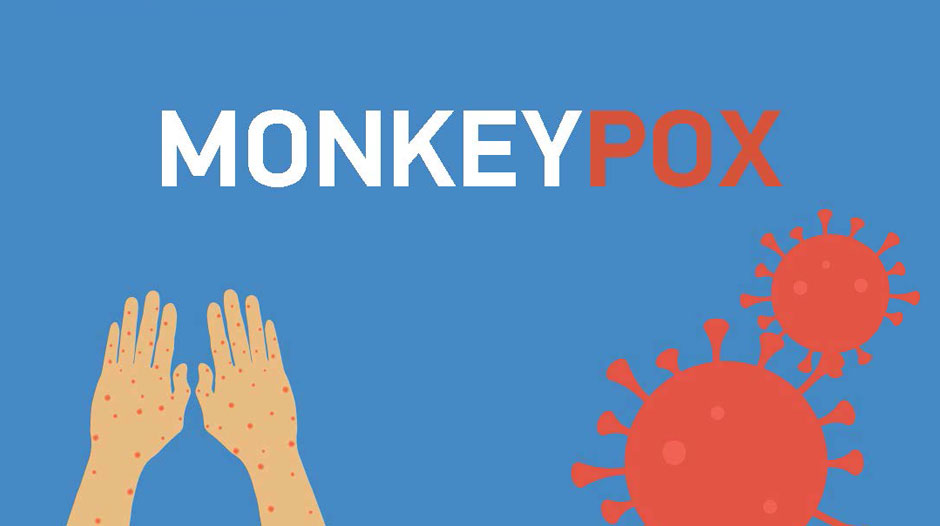With the World Health Organization, and now the White House, declaring monkeypox a public health emergency, you may be feeling worried, especially after enduring the COVID-19 pandemic. Now what? Fortunately, monkeypox is no COVID-19 – not even close. So is a collective sigh of relief warranted? In many respects, yes. It can’t spread far through the air, so it’s less contagious in a public setting, and it’s rarely fatal. But it can be very painful, can last 2-4 weeks and can cause permanent scarring, so you should still try to avoid it. Here’s some information on how to navigate monkeypox.
What exactly is monkeypox?
Monkeypox is a virus. It is a disease that causes pox-like bumps on the skin (also referred to as a rash). Despite being named “monkeypox,” the source of the disease is likely rodents found in West and Central Africa. Before the current outbreak, cases were typically linked to international travel to Africa or humans coming in contact with an infected animal via bites, scratches or ingesting its meat. Cause for concern arose when several countries that do not normally report monkeypox (e.g., the U.S.) started to see an outbreak of the disease.
How does it spread?
You can get monkeypox through direct contact with the rash, scabs, respiratory secretions or body fluids from a person with monkeypox. Direct contact can mean talking closely face-to-face for a prolonged time, kissing, snuggling, hugging, massaging and having sex. You can also contract it by touching objects and surfaces that someone with monkeypox used (like sheets and towels). Additionally, a pregnant person can spread the virus to the fetus.
Although the majority of monkeypox patients are men who have sex with men right now, anyone can contract it through close contact with someone who has the virus. And the window for infection is quite large: Monkeypox can be spread from the time symptoms start until the rash has completely healed, which can take up to four weeks. Symptoms usually start within 3 weeks of exposure to the virus.
What are the signs and symptoms?
At the very least, most people with monkeypox will get the telltale rash. The rash, which can look like pimples or blisters, may be painful or itchy. It can be located on or near the genitals, anus, hands, feet, chest, face or mouth. The rash will go through several stages (including scabs) before healing.
Other symptoms can include fever, headache, muscle aches and backache, swollen lymph nodes, chills, exhaustion, sore throat, nasal congestion and cough. The symptoms at the onset of the disease vary: Some report flu-like symptoms followed by a rash 1-4 days later. Others report getting a rash first, then other symptoms later. Some only experience a rash. So people with monkeypox can experience all or only a few symptoms.
What if I get it?
If you have symptoms of monkeypox, contact your healthcare provider. If they want to see you in person, to avoid infecting others, wear a mask and cover the rash with clothing. If you test positive, your provider will recommend next steps, such as any treatments, like creams, and how to avoid spreading the virus to others in your home (https://www.cdc.gov/poxvirus/monkeypox/specific-settings/home-disinfection.html).
Although your symptoms may be alarming, most people recover without the need for any drug treatments, such as investigational antivirals (https://www.cdc.gov/poxvirus/monkeypox/treatment.html) or vaccines (https://www.cdc.gov/poxvirus/monkeypox/vaccines.html ).
How do I protect myself and others?
If there’s any similarity between monkeypox and COVID-19, it’s in the steps we can take to prevent getting the virus. Handwashing and avoiding close physical contact with an infected person are the most important prevention measures. Monkeypox can be occasionally transmitted from infected surfaces, especially linens and towels. Remember, like COVID, anyone can get monkeypox, so stay informed.
Although the U.S. has not reported any deaths from monkeypox, it’s still important to follow the latest guidelines to protect yourself. Go to https://www.cdc.gov/poxvirus/monkeypox/index.html for more information.
For additional information about monkeypox from Huntington Health, go to: Monkeypox Information | Huntington Health
 English
English Espanol
Espanol 简体中文
简体中文 Tagalog
Tagalog հայերեն
հայերեն 한국인
한국인 Tiếng Việt
Tiếng Việt فارسی
فارسی русский
русский 日本
日本 عربي
عربي